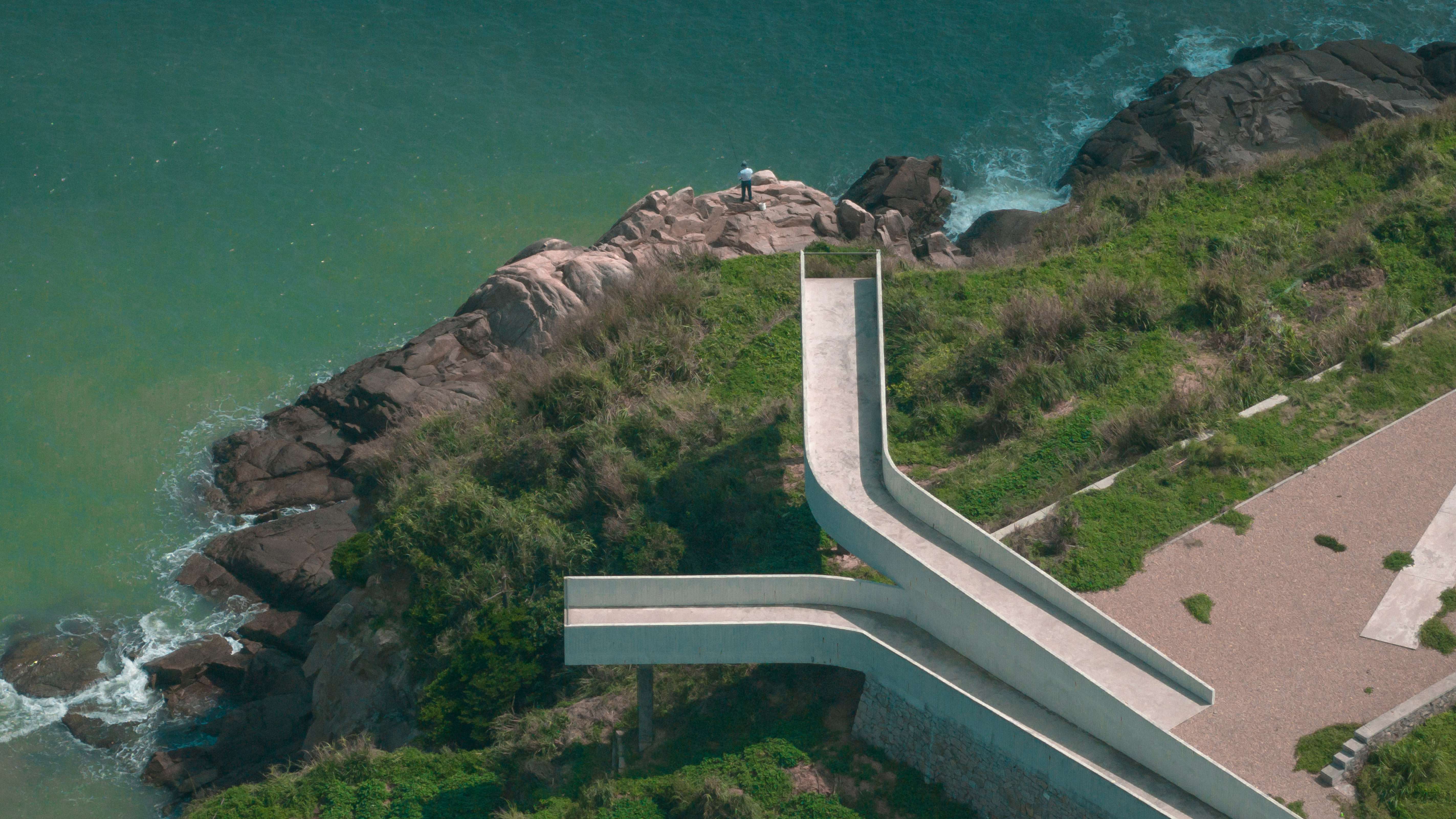

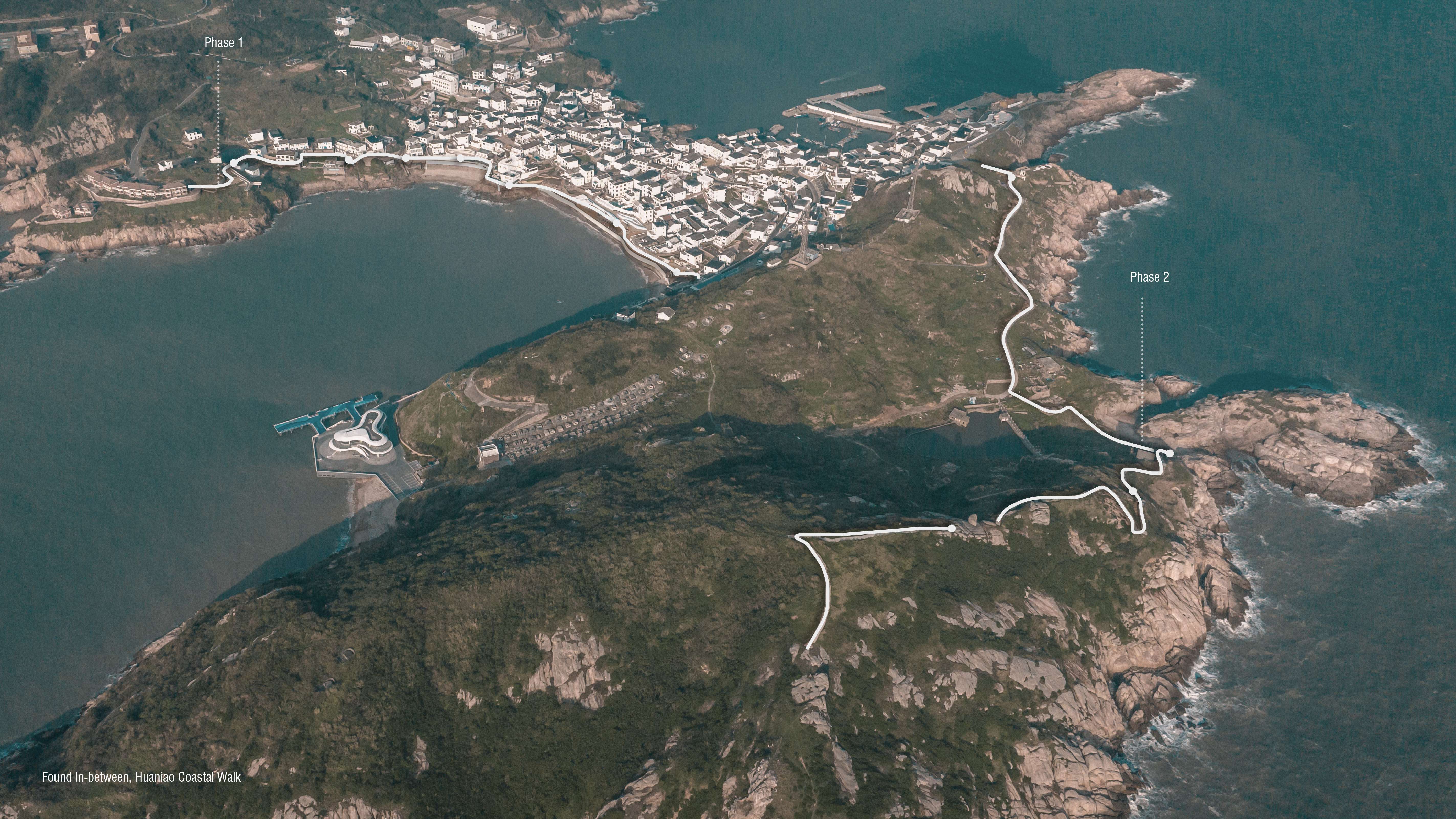
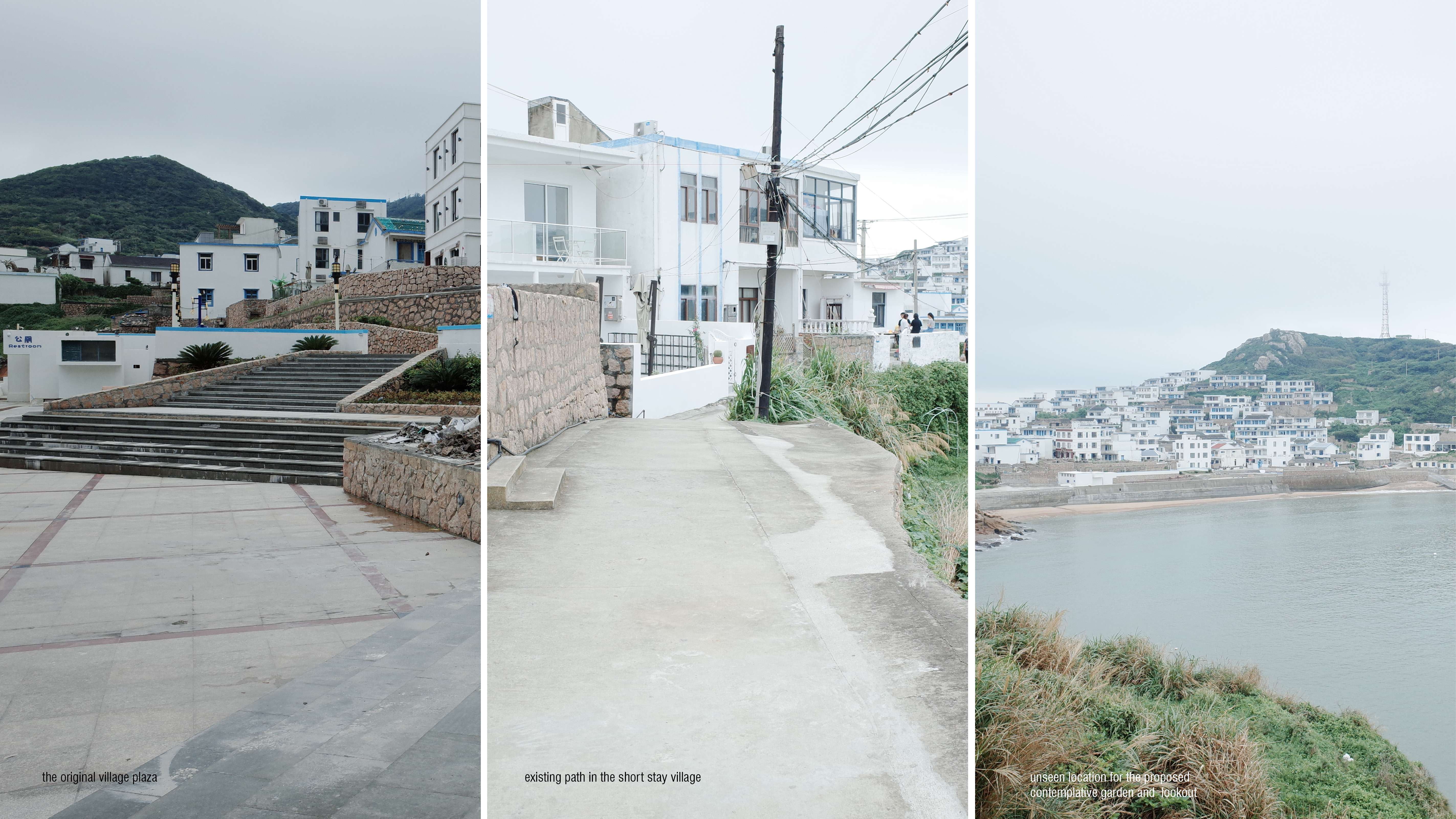
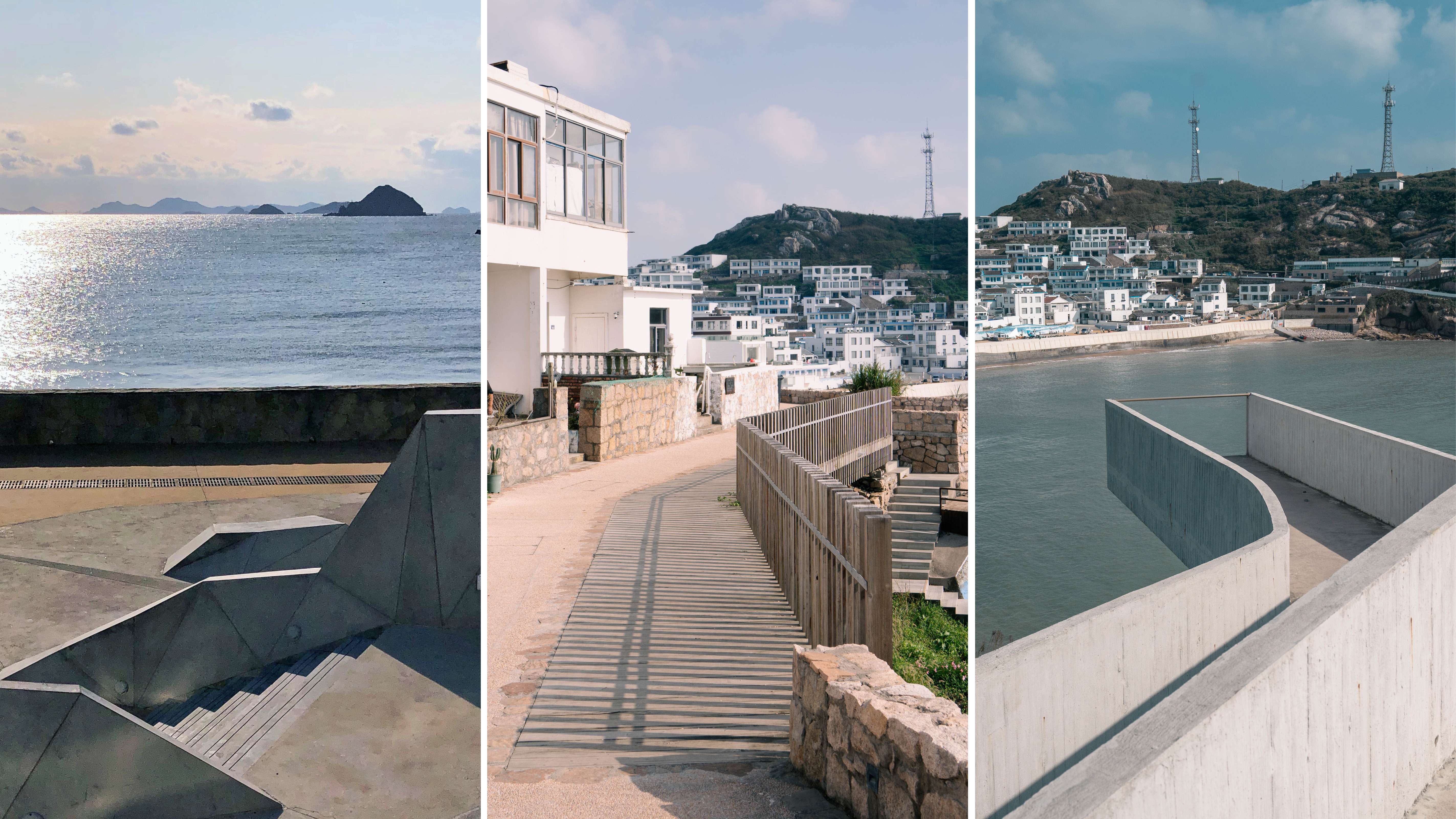
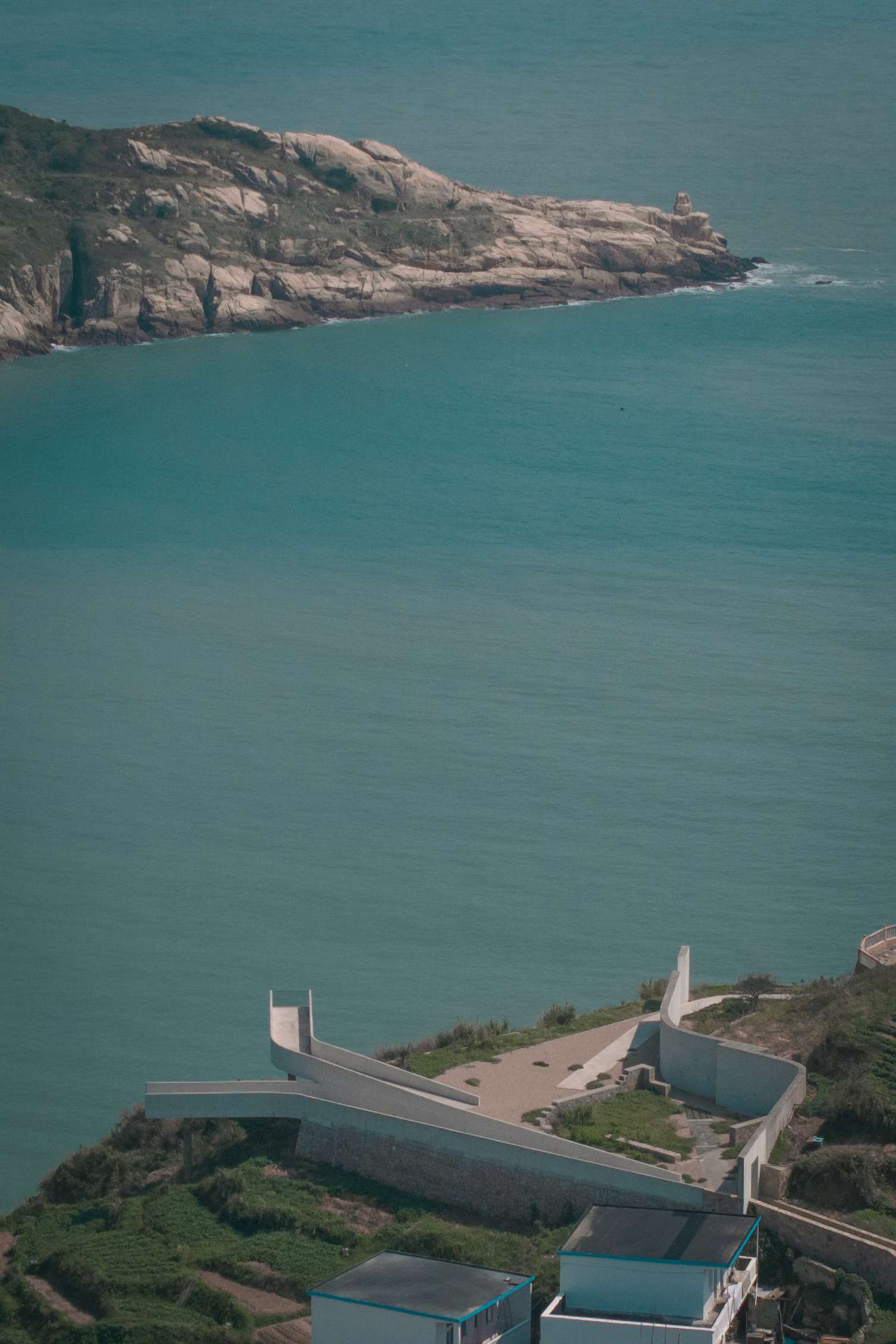
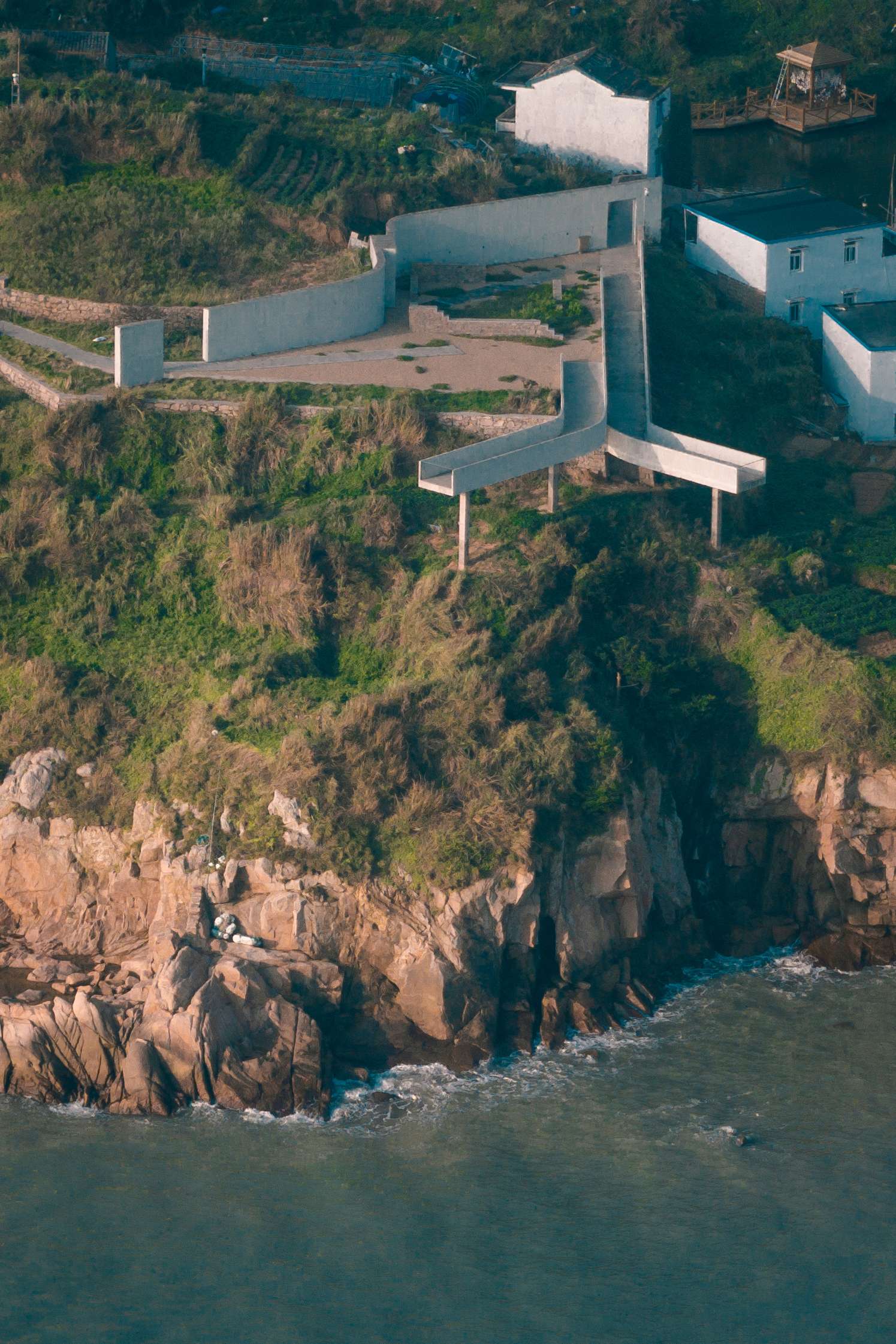
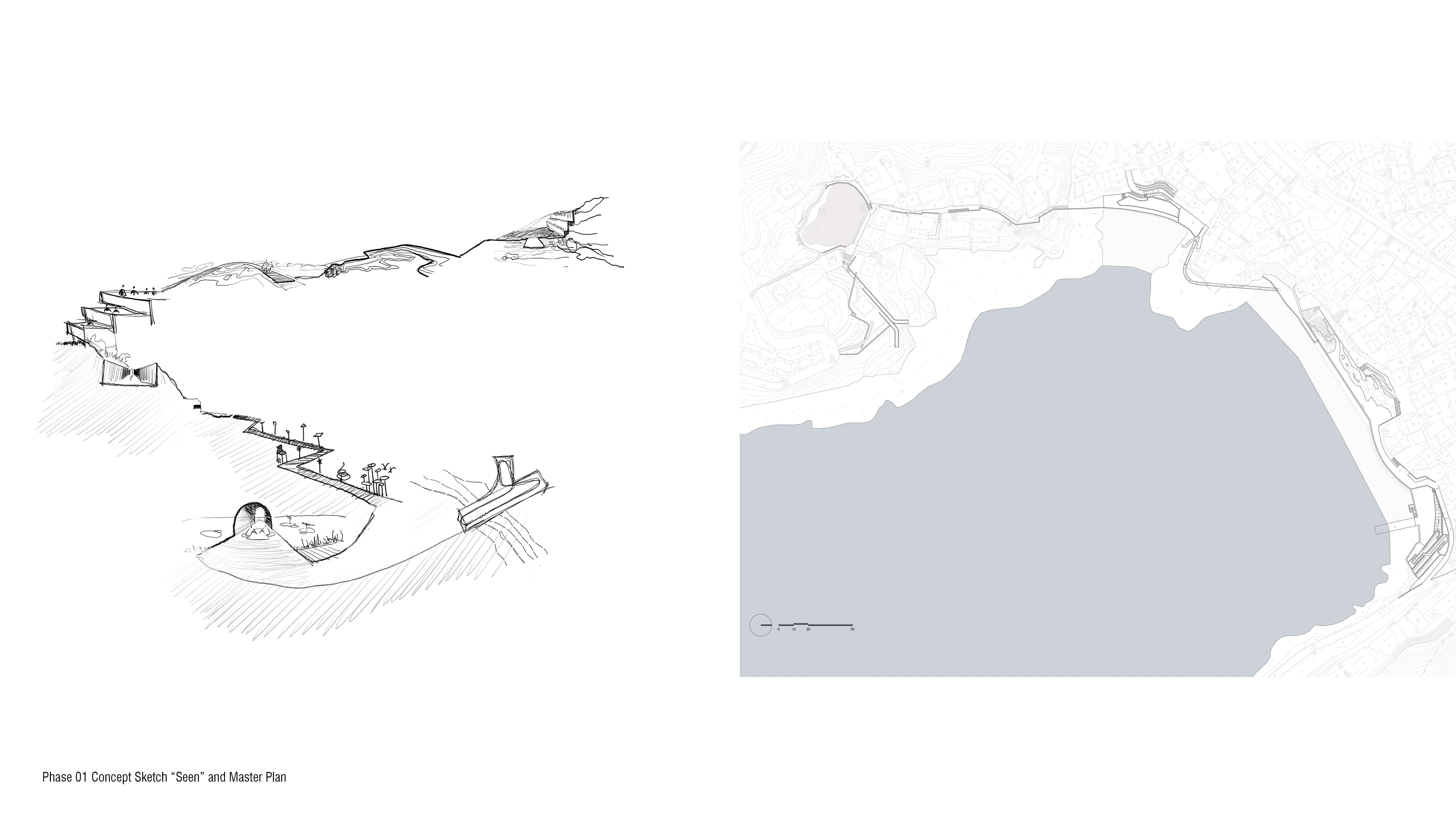
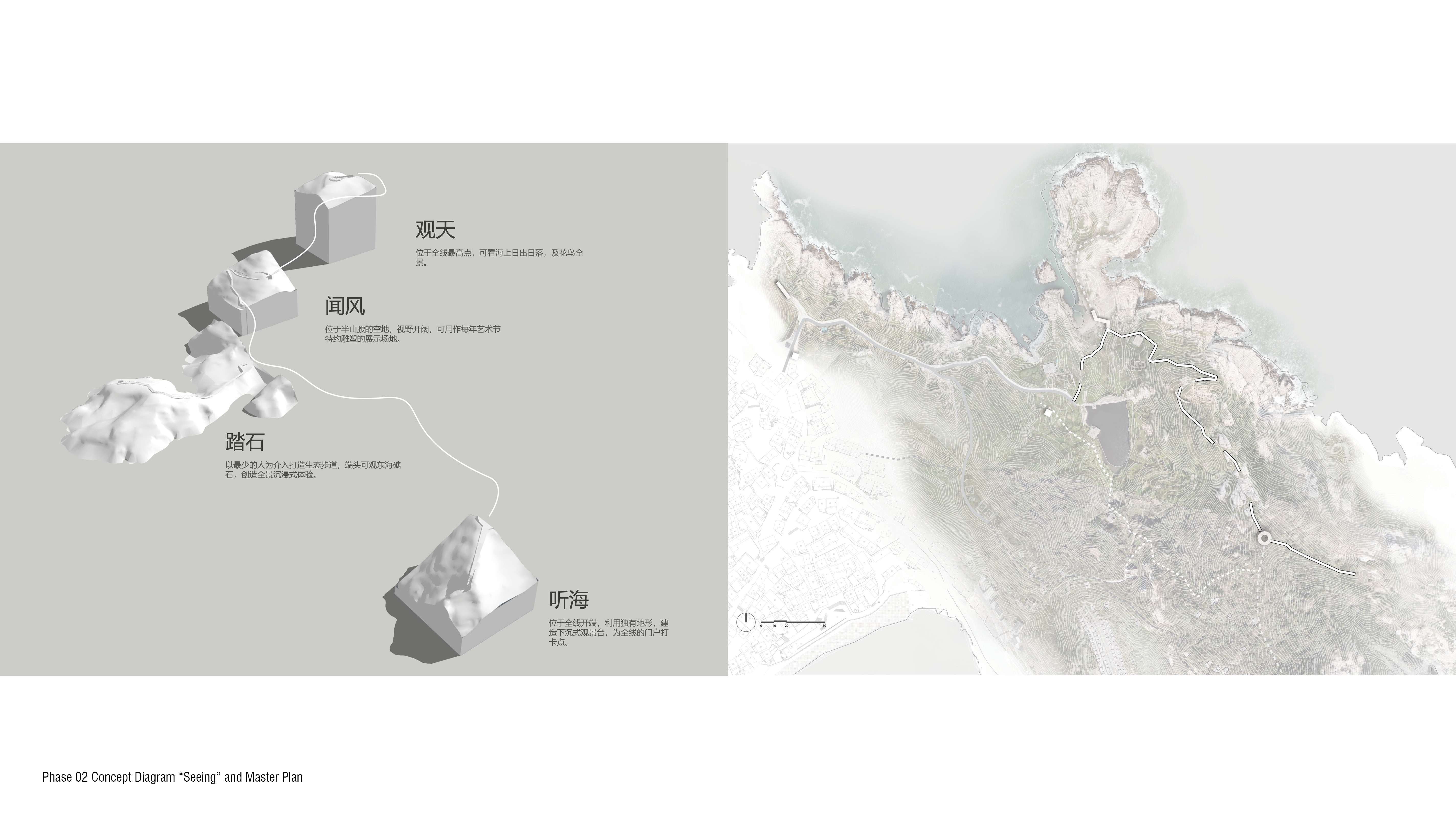
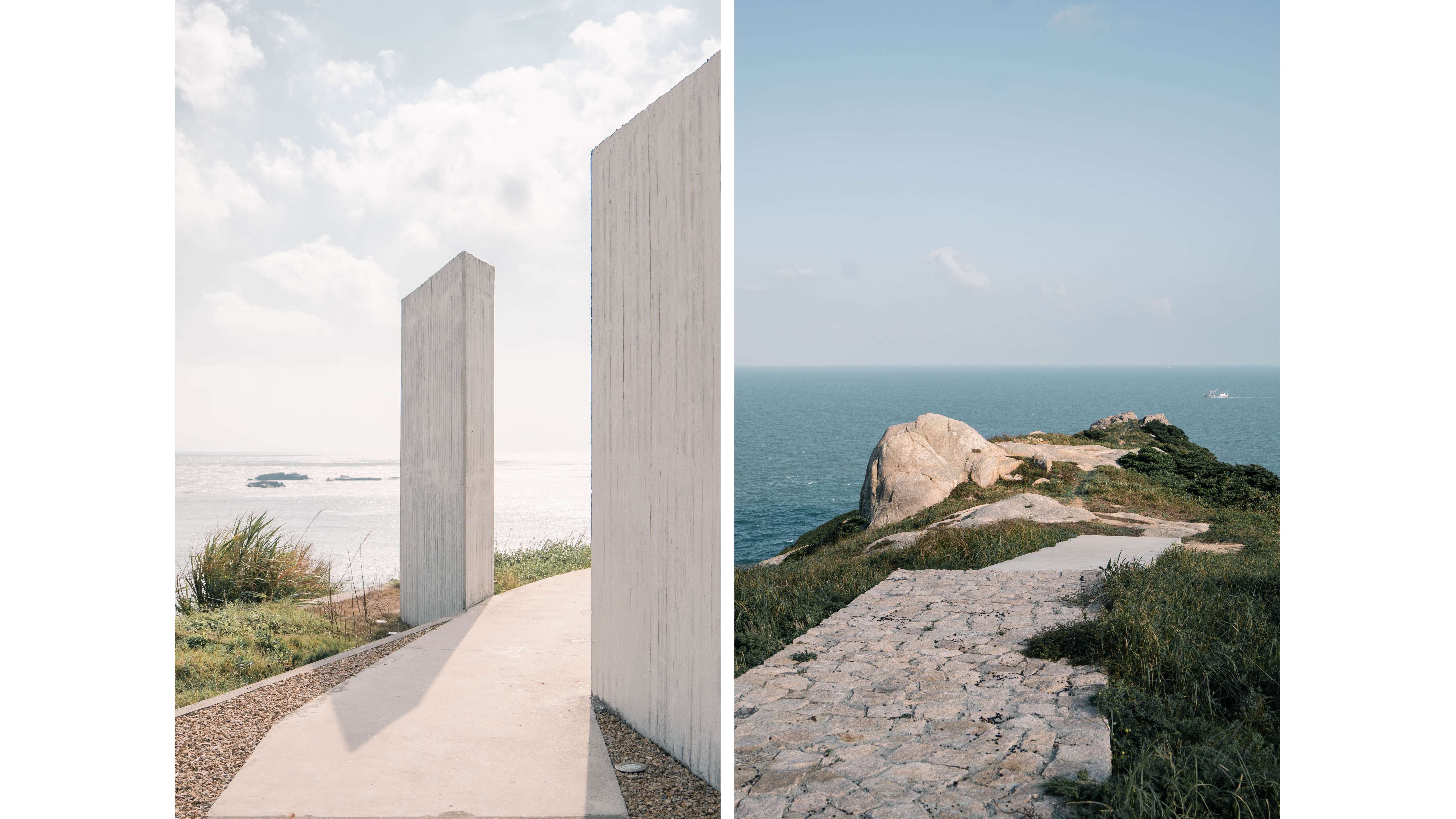
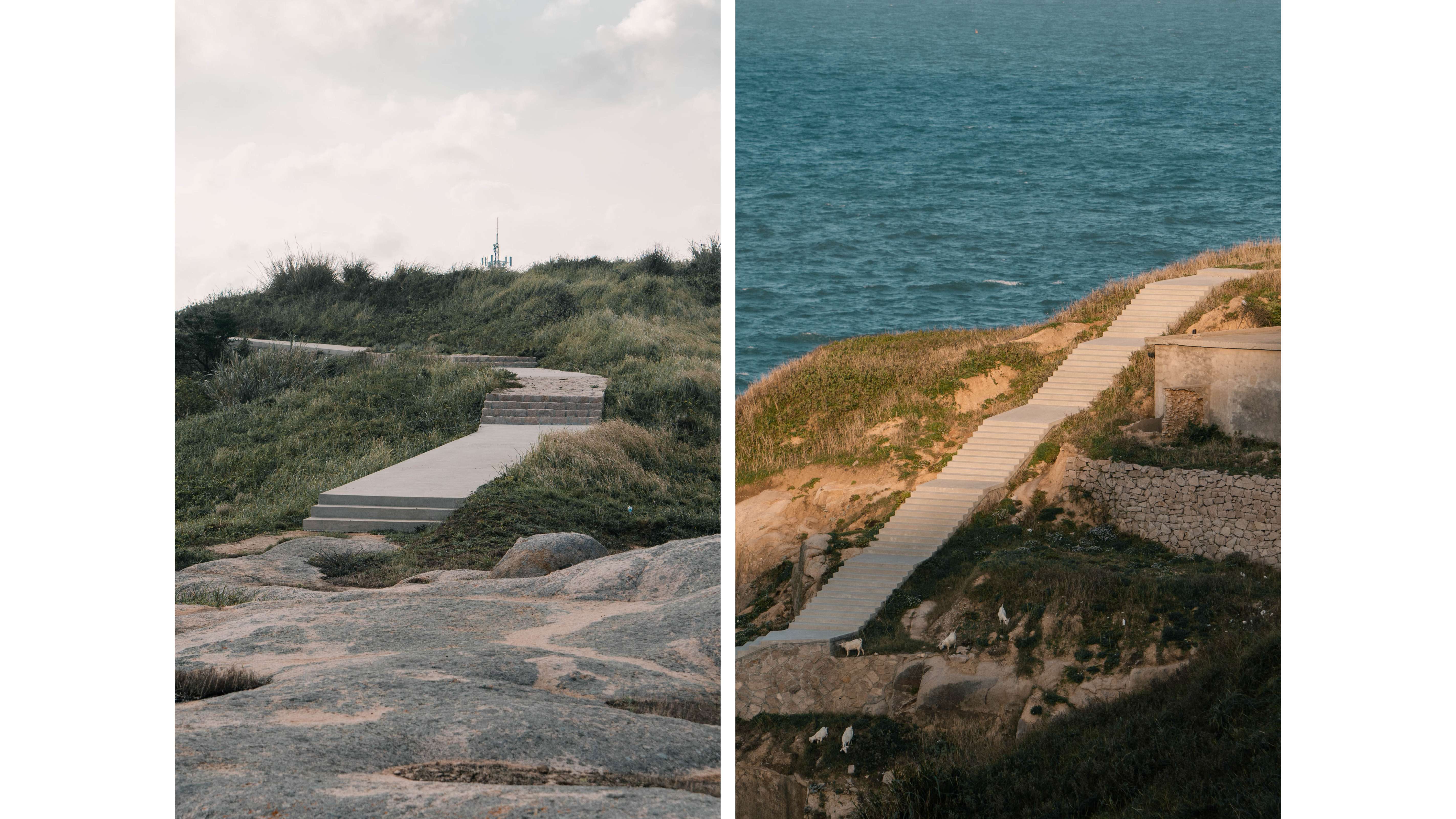

Encontrado en el medio: Paseo costero de Huaniao
Found in-between: Huaniao Coastal Walk
Found In-Between: The Huaniao Island Coastal Walk
On a journey, we ultimately see ourselves.
Huaniao Island, the easternmost island in the Zhoushan Archipelago, stands quietly at a new threshold—between rural revitalisation and emerging tourism. Studio VOVO was invited to take part in this moment of renewal.
The Huaniao Coastal Walk unfolds as a journey composed of multiple nodes—a loose thread weaving through the island and its village. Our task was not to transform, but to reveal: to give shape to what was already present but unseen, and to let the poetics of space speak through landscape, forming a dialogue between body, terrain, and memory. This spatial experience gives form to the idea of “間” (Jian, Ma, in-between)—a uniquely East Asian philosophical perspective that describes the dynamic relation between form and void, presence and absence, seen and seeing.
Two Phases
The design evolved in two phases along the southern and northeastern coasts of the island, offering access to its most striking natural and cultural features. The first phase winds through the south shore, linking beaches, villages, and hidden spaces with design interventions—viewing decks, pathways, and moments of pauses, prompting the island to be found and seen. The second phase continues this narrative on the island’s northeast, following topography to define a subtle trail. Along both phases, visitors encounter spaces for revealing, some designed, many left untouched, inviting contemplation, discovery, and resonance.
These are not destinations but moments of encounter. The walk is self-guided, and its success lies in how it encourages visitors to slow down and listen—to the rustling of dry grasses, the calls of goats between hills, the ocean’s pulse below. Through movement, sight, and sound, the journey becomes a quiet invitation to find oneself through the journey.
A Landscape Found In-between
At the heart of this project is the idea of in-between (Jian, Ma, 間)—not as a void or emptiness, but as a connective and transformative condition. Our role as designers was to respond to what already existed: the island’s fractured paths, forgotten spaces, and layered history. We mapped and identified subtle cues in the landscape, and used them to guide design interventions.
One such moment occurs at the southwestern edge of the south shore, where a modest gateway leads into a contemplative garden. A terrace is constructed by adapting remnant stone walls. Discarded bricks and tiles recycled from village ruins are reused to pave paths. A lookout connects sea and village, forming a literal and symbolic bridge—a connection where one sees and is seen, a moment of resonance between landscape and senses.
A Material and Ecological Dialogue
Our interventions do not dominate the landscape. They remain incomplete, open-ended, and temporal. It encourages spontaneity, slowness, attention, and relational being.
Inspired by Gilles Clément’s Third Landscape, the planting celebrates the island’s own capacity to regenerate. Rather than introducing invasive ornamental species, we employed the strategy of spontaneous planting, allowing native flora to thrive. The result is not manicured beauty, but an authentic wilderness—raw, shifting, and alive.
Materials were chosen with similar care. Where possible, we reused local bricks, stones, and rubble gathered from abandoned homes. Construction was kept low-tech and appropriate to the local craftsmen’s capacity. In many cases, villagers themselves participated in the construction process.
The trails were designed with the trace of topography—minimising earthwork, adapting to natural contours, and utilising existing exposed rock surfaces where suitable.
Seeing, Sensing, Being
In a culture that often celebrates the visible, we turned instead to what lies in-between. The design disappears between points, and what fills the gaps is the landscape itself—the smell of the sea, the sound of birds, the grain of time in stone.
What matters most here is not the object of design, but the experience of finding and embodied sensing.
The Huaniao coastal walk is not a loop, but a line extending inward. From cities like Shanghai, Hangzhou, and Ningbo to the vast sea and finally to this forgotten island, the journey begins with looking and ends in seeing the self.
